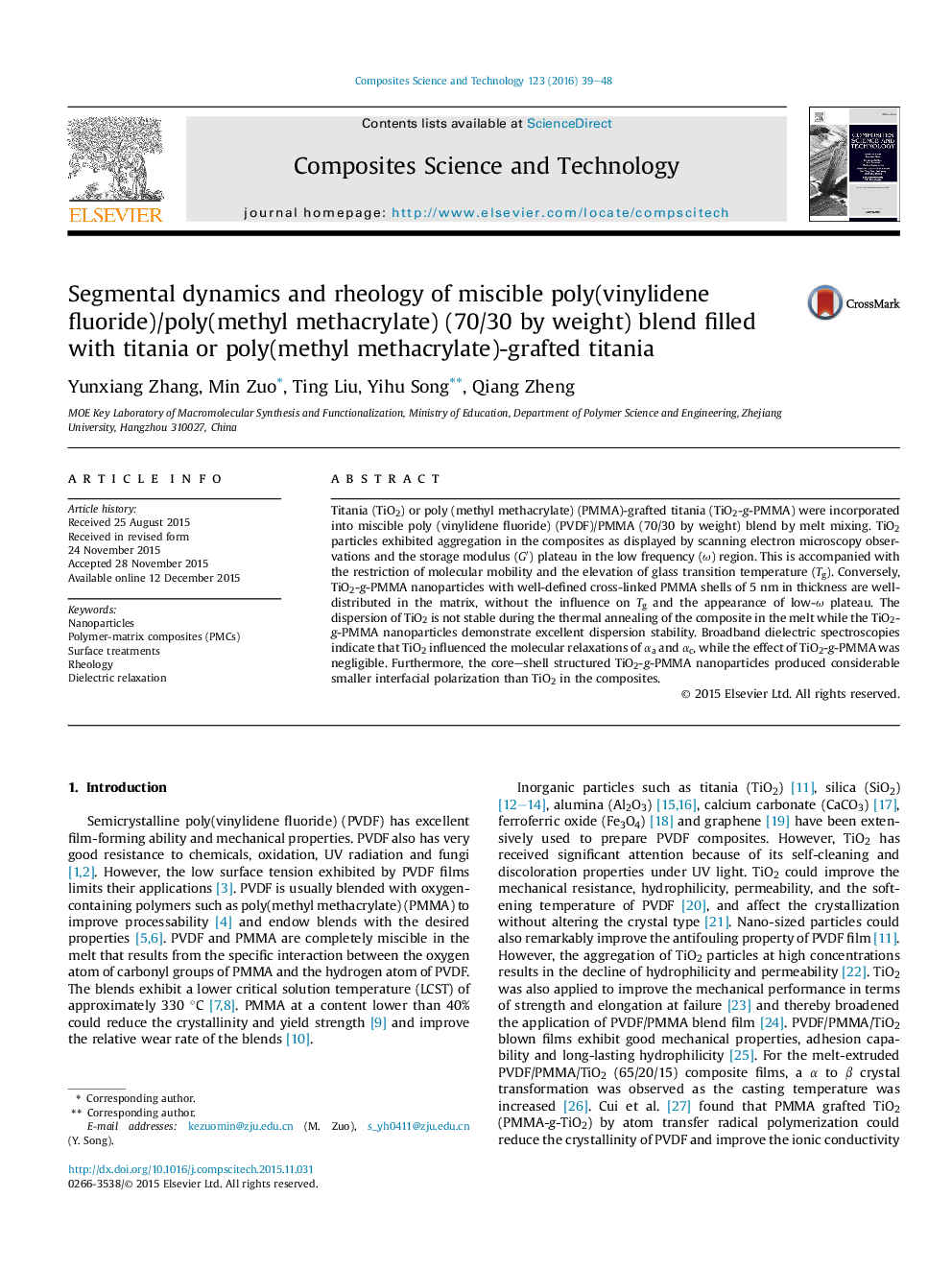| Article ID | Journal | Published Year | Pages | File Type |
|---|---|---|---|---|
| 7215163 | Composites Science and Technology | 2016 | 10 Pages |
Abstract
Titania (TiO2) or poly (methyl methacrylate) (PMMA)-grafted titania (TiO2-g-PMMA) were incorporated into miscible poly (vinylidene fluoride) (PVDF)/PMMA (70/30 by weight) blend by melt mixing. TiO2 particles exhibited aggregation in the composites as displayed by scanning electron microscopy observations and the storage modulus (Gâ²) plateau in the low frequency (Ï) region. This is accompanied with the restriction of molecular mobility and the elevation of glass transition temperature (Tg). Conversely, TiO2-g-PMMA nanoparticles with well-defined cross-linked PMMA shells of 5 nm in thickness are well-distributed in the matrix, without the influence on Tg and the appearance of low-Ï plateau. The dispersion of TiO2 is not stable during the thermal annealing of the composite in the melt while the TiO2-g-PMMA nanoparticles demonstrate excellent dispersion stability. Broadband dielectric spectroscopies indicate that TiO2 influenced the molecular relaxations of αa and αc, while the effect of TiO2-g-PMMA was negligible. Furthermore, the core-shell structured TiO2-g-PMMA nanoparticles produced considerable smaller interfacial polarization than TiO2 in the composites.
Keywords
Related Topics
Physical Sciences and Engineering
Engineering
Engineering (General)
Authors
Yunxiang Zhang, Min Zuo, Ting Liu, Yihu Song, Qiang Zheng,
